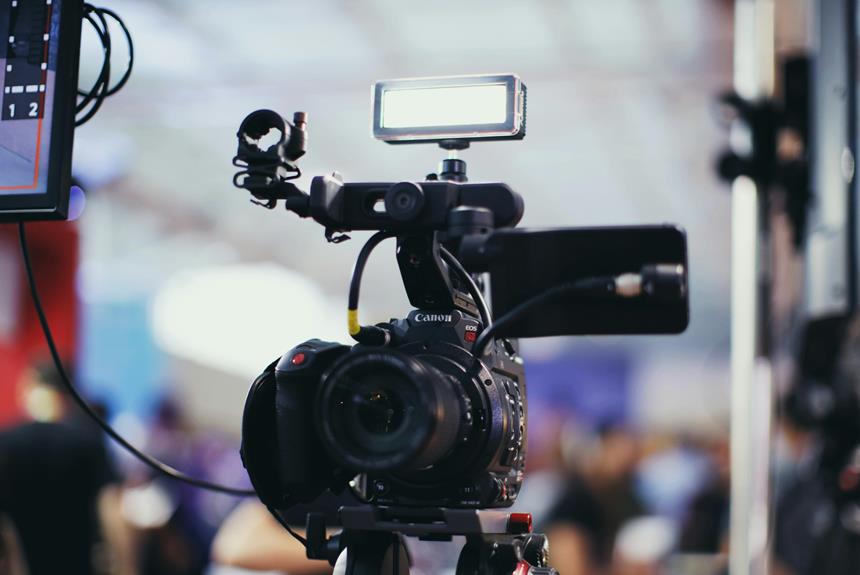In a professional setting, the issue of recording Zoom meetings without permission raises complex ethical and legal considerations. While the desire to capture important information is understandable, it is crucial to navigate this territory with caution and respect for privacy.
As technology advances, so do the methods for obtaining meeting records. However, the key lies not just in the act of recording but in the responsible handling of the recorded content.
Exploring the nuances of this topic can shed light on the intricacies of modern communication practices and the delicate balance between convenience and privacy.
How to record Zoom meeting without permission?
To surreptitiously record a Zoom meeting without obtaining the participants' consent, one must employ specific techniques to bypass the platform's recording notifications and permissions. One common method is to use third-party screen recording software that can capture the meeting without triggering Zoom's built-in recording notification. These software tools allow users to record the meeting window discreetly without any visible indications to other participants.
Another approach is to use a separate recording device, such as a camera or smartphone, to capture the meeting externally. By positioning the device to focus on the computer screen displaying the Zoom meeting, individuals can create a recording without relying on Zoom's internal features.
Additionally, some users may choose to exploit vulnerabilities or loopholes in Zoom's security features to enable unauthorized recording. However, these methods are not recommended as they may violate ethical standards and potentially breach legal regulations regarding privacy and consent. It is essential to consider the implications of recording meetings without permission before engaging in such practices.
Ethical and legal considerations of recording meetings
Considering the ethical and legal implications of recording meetings without proper consent is essential in maintaining trust and upholding privacy standards in professional settings.
Ethically, recording a meeting without obtaining consent from all participants can breach their expectations of privacy and confidentiality. It can also lead to feelings of mistrust and discomfort among team members, potentially damaging working relationships.
From a legal standpoint, recording meetings without consent may violate data protection laws, especially in regions with strict privacy regulations like the General Data Protection Regulation (GDPR) in the European Union. Unauthorized recording can result in legal consequences and penalties for the individual or organization responsible.
Additionally, in certain industries such as healthcare or finance, recording meetings without consent may lead to severe regulatory violations and jeopardize compliance with industry-specific laws. Therefore, it is crucial to always obtain explicit consent from all parties involved before recording any meeting to ensure ethical behavior, maintain legal compliance, and uphold professional standards of privacy and trust.
Alternative methods for capturing meeting information
Exploring alternative methods for documenting meeting information can offer valuable insights into maintaining records while respecting privacy and legal considerations.
One such method is taking detailed meeting minutes. These notes should capture key discussion points, decisions made, and action items without recording audio or video.
Another approach is to utilize screen recording software to capture the contents displayed during the meeting, such as slides, documents, or visuals, while refraining from recording the actual participants.
Additionally, creating comprehensive summaries or reports post-meeting can serve as an effective way to document important information without the need for recording.
Employing digital note-taking tools that allow for real-time collaboration and organization can also help in capturing meeting details while ensuring data privacy.
Moreover, utilizing timestamps or markers within these notes can provide a structured way to track the progression of discussions.
Communicating recording intentions transparently
When planning to record Zoom meetings, it is essential to clearly communicate your intentions regarding recording to all participants involved. Transparency is key to maintaining trust and ensuring compliance with privacy regulations.
Before initiating the recording, inform all attendees that the meeting will be recorded and provide a brief explanation of the purpose behind the recording. This upfront communication allows participants to make an informed decision about their continued participation based on their comfort level with being recorded.
To effectively communicate your recording intentions, consider sending out a meeting agenda or notification in advance that includes a section detailing the recording plan. During the meeting, reiterate the recording notice to ensure that all participants are aware and have the opportunity to raise any concerns. Additionally, encourage attendees to ask questions or seek clarification regarding the recording process to address any potential uncertainties promptly.
Safeguarding recorded content responsibly
To ensure the protection and confidentiality of recorded content, it is imperative to establish robust security measures and access controls. Safeguarding recorded content responsibly is essential to maintain trust and privacy.
Here are three key measures to consider:
- Encryption: Implement end-to-end encryption to secure the recorded content and prevent unauthorized access or interception.
- Access Control: Limit access to the recorded content by utilizing password protection, multi-factor authentication, and role-based permissions to ensure that only authorized individuals can view or download the recordings.
- Secure Storage: Store the recorded content in secure and compliant cloud storage solutions that offer encryption at rest, regular backups, and audit trails to track any changes or access to the recordings.
